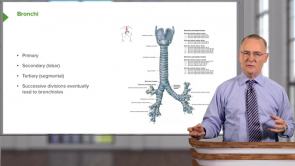Femoral Hernia

About the Lecture
The lecture Femoral Hernia by Craig Canby, PhD is from the course Abdominal Wall with Dr. Canby.
Included Quiz Questions
With respect to the femoral triangle, which statement is most accurate?
- The floor is formed by the pectineus.
- The inguinal ligament forms the lateral border.
- The adductor magnus forms the medial boundary.
- The sartorius forms the superior border.
- The roof is formed by the adductor longus.
With respect to the femoral sheath, which of the following is most accurate?
- The femoral canal is encased within the femoral sheath.
- The femoral artery is not encased within the femoral sheath.
- The femoral nerve is contained within the femoral sheath.
- The femoral vein is not contained within the femoral sheath.
- The femoral sheath lies outside the femoral triangle.
When considering boundaries of the femoral canal, which of the following structures forms the medial border?
- Lacunar ligament
- Adductor longus
- Pectineal ligament
- Femoral vein
- Inguinal ligament
With respect to hernias, which of the following statements is most accurate?
- Both direct and indirect hernias pass through the superficial inguinal ring.
- Direct inguinal hernias occur through a birth defect in the abdominal wall.
- Indirect hernias usually occur in men and are the result of recurrent straining.
- Direct inguinal hernias pass through the deep inguinal ring.
- Femoral hernias are more common in men.
Customer reviews
5,0 of 5 stars
| 5 Stars |
|
5 |
| 4 Stars |
|
0 |
| 3 Stars |
|
0 |
| 2 Stars |
|
0 |
| 1 Star |
|
0 |

![Anatomy [Archive]](https://assets-cdn1.lecturio.de/lecture_collection/image_medium/87992_1693919964.png)


